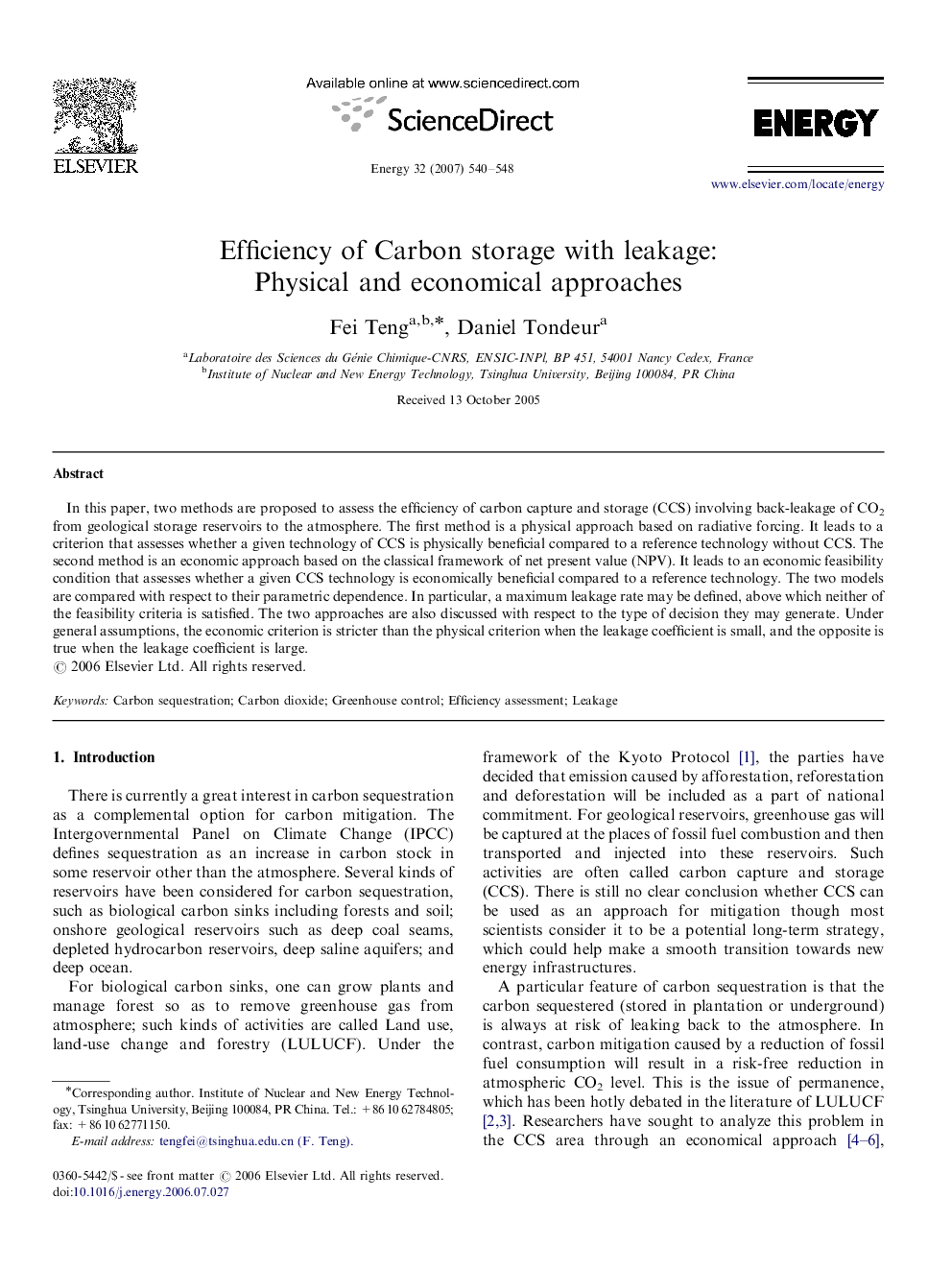| Article ID | Journal | Published Year | Pages | File Type |
|---|---|---|---|---|
| 1736070 | Energy | 2007 | 9 Pages |
In this paper, two methods are proposed to assess the efficiency of carbon capture and storage (CCS) involving back-leakage of CO2 from geological storage reservoirs to the atmosphere. The first method is a physical approach based on radiative forcing. It leads to a criterion that assesses whether a given technology of CCS is physically beneficial compared to a reference technology without CCS. The second method is an economic approach based on the classical framework of net present value (NPV). It leads to an economic feasibility condition that assesses whether a given CCS technology is economically beneficial compared to a reference technology. The two models are compared with respect to their parametric dependence. In particular, a maximum leakage rate may be defined, above which neither of the feasibility criteria is satisfied. The two approaches are also discussed with respect to the type of decision they may generate. Under general assumptions, the economic criterion is stricter than the physical criterion when the leakage coefficient is small, and the opposite is true when the leakage coefficient is large.
